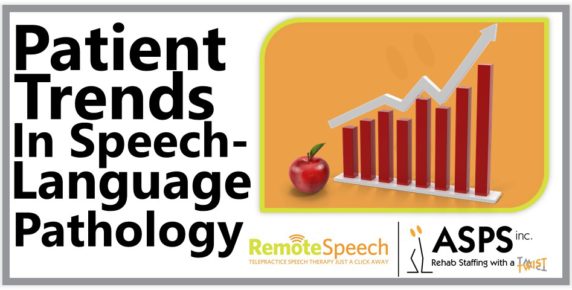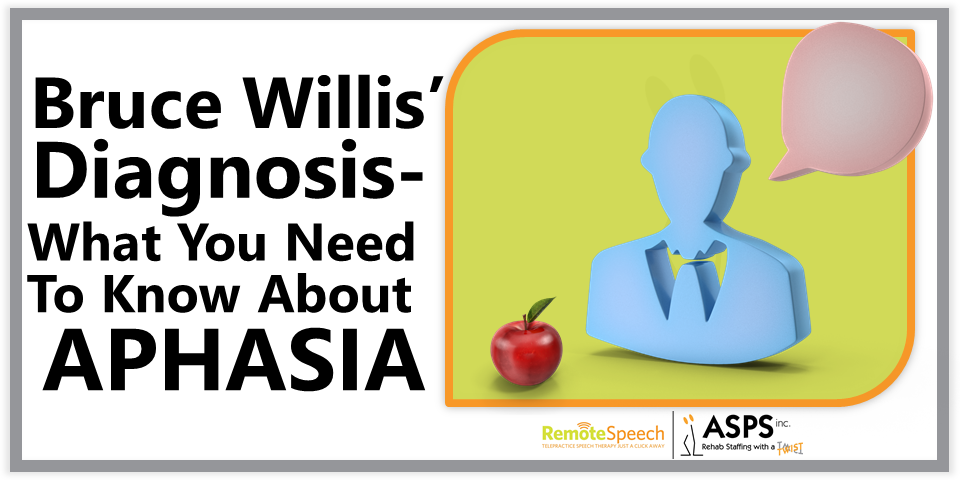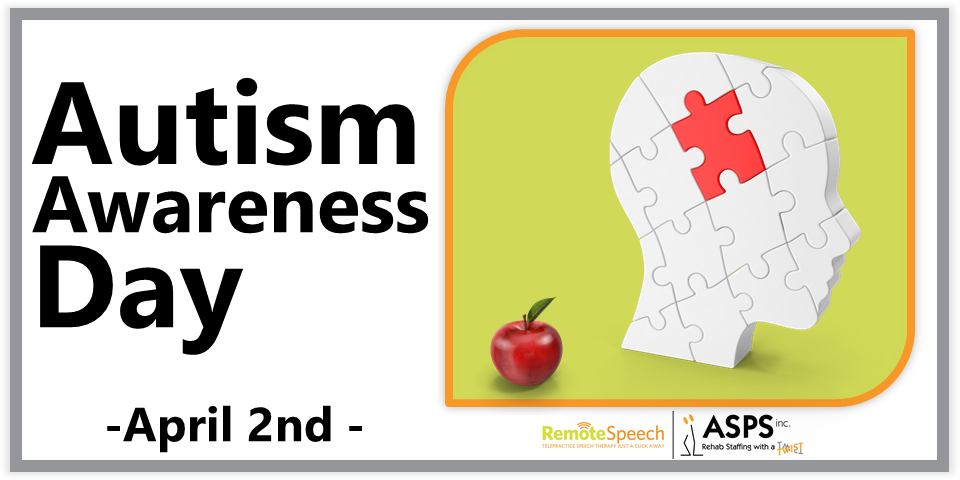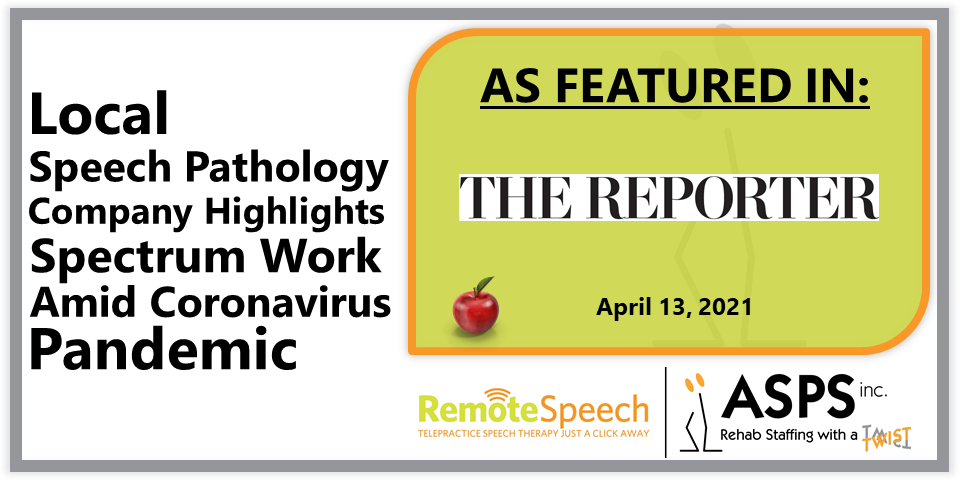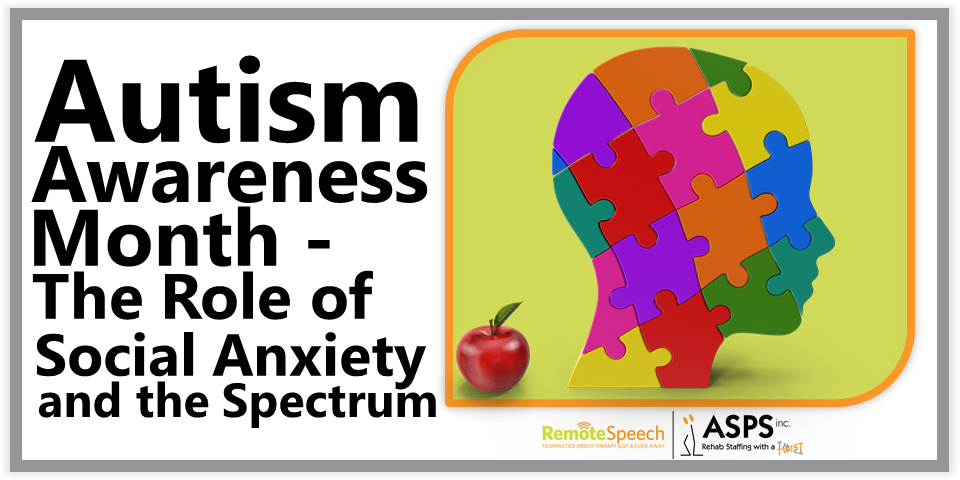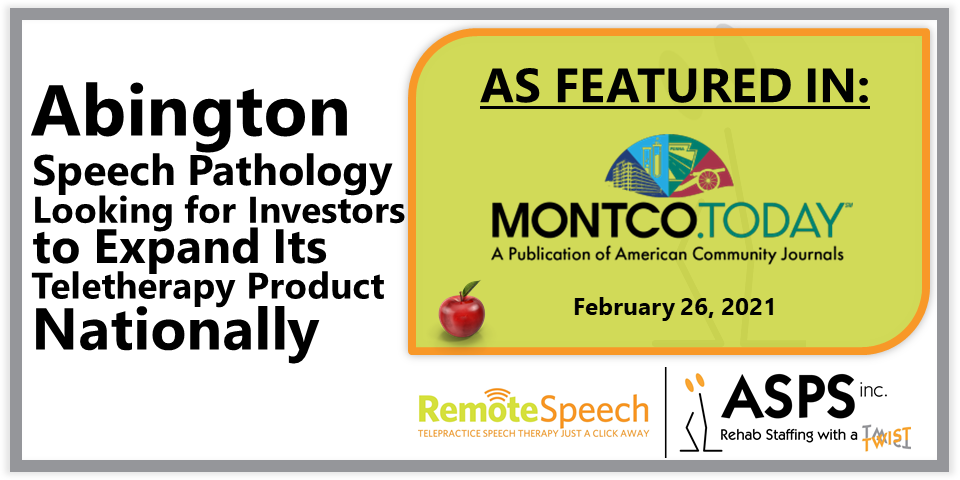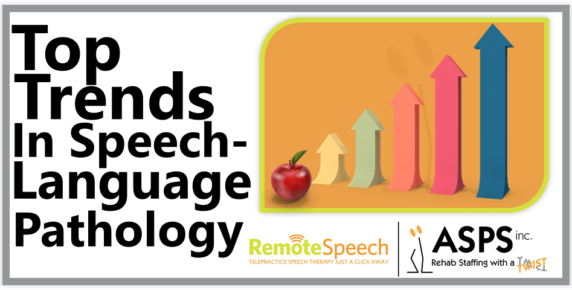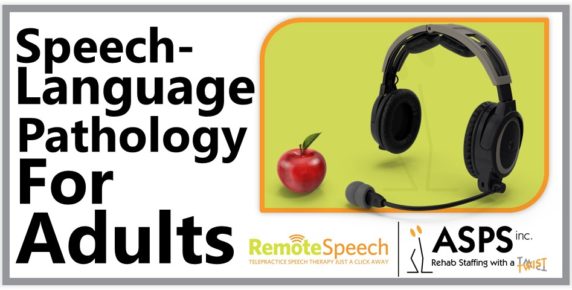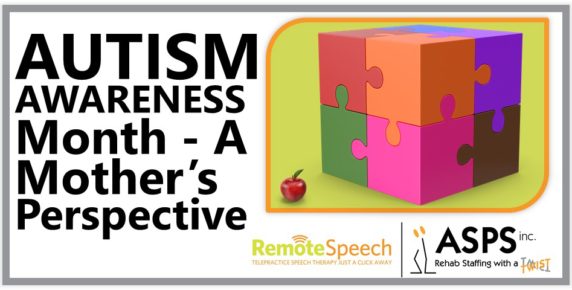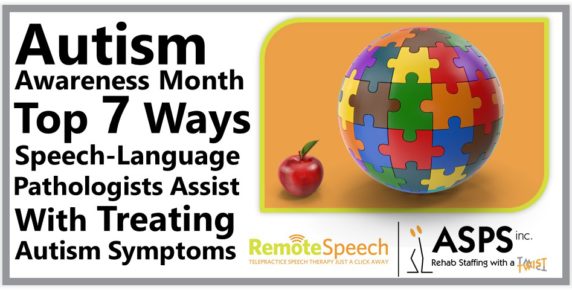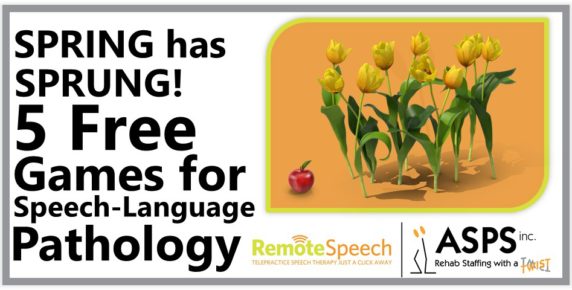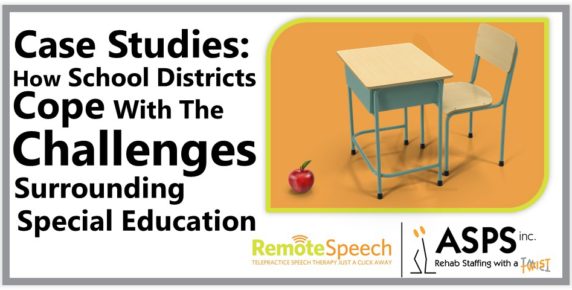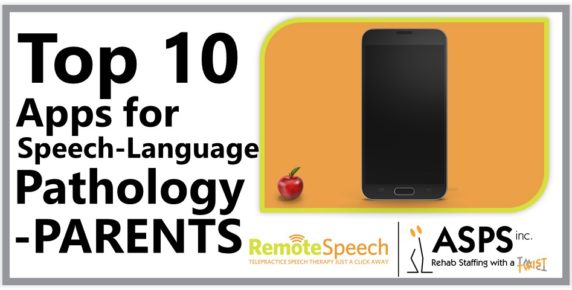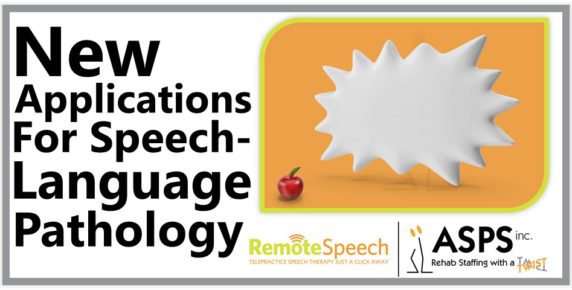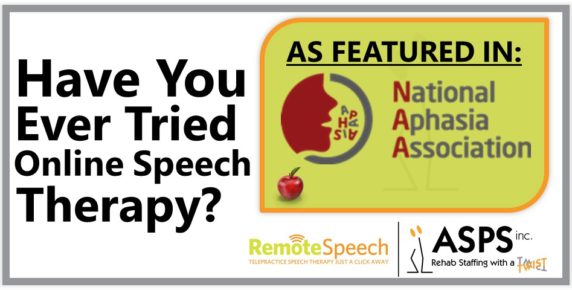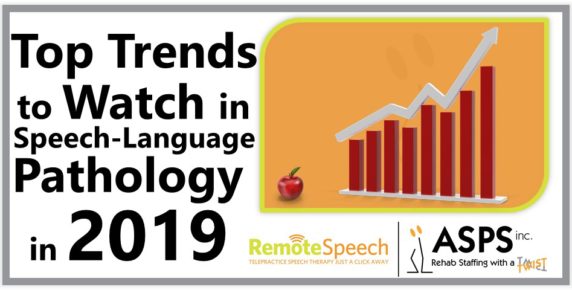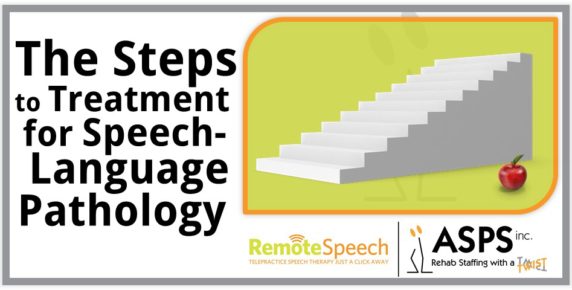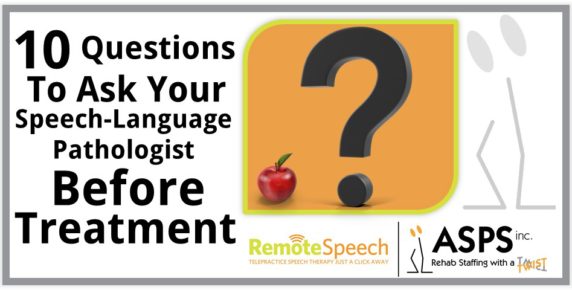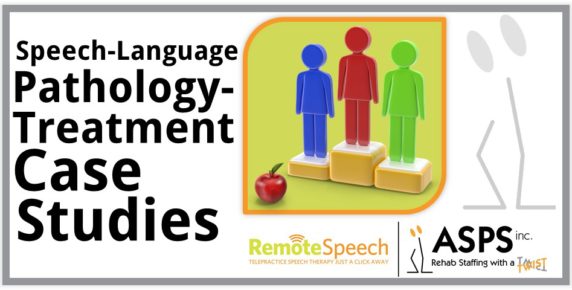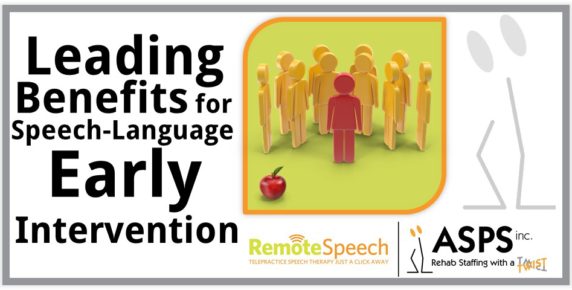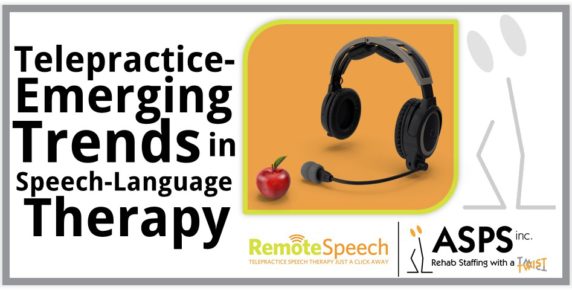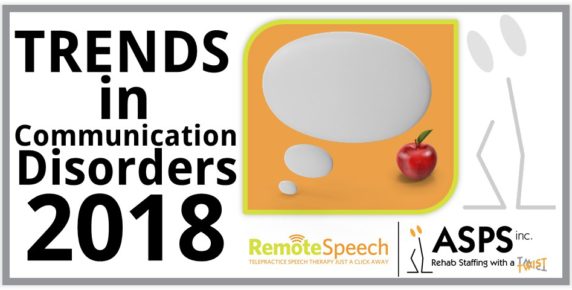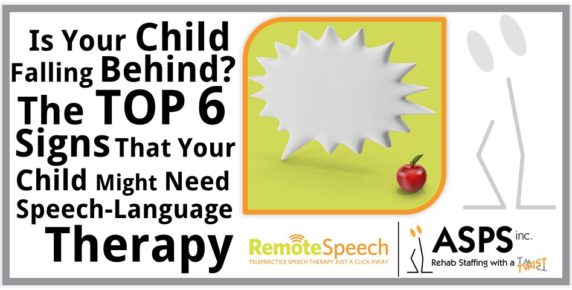At Abington Speech Pathology and RemoteSpeech.com, we are continually examining new breakthroughs in our field. These breakthroughs inspire us to continue learning new methods and strategies of treatment for our patients and networks of support. In this process, we consistently notice trends in the industry that seem to create more questions than answers.
In the first quarter of 2019, we examined a series of research projects and reports related to the industry of speech-language pathology. While these reports examined the industry, we could not help but notice the profound impact the findings have on patients of all ages, their families, caregivers, and extended network. In this article, we have shared findings from leading reports across the nation, and have provided insight to describe how patients of all ages are impacted, and how each trend has a direct impact on other leading trends in the industry.
1. DEMAND FOR SPEECH THERAPY CONTINUES TO INCREASE.
An article published on April 16, 2019, titled “Startling autism increase found in N.J., this time among younger kids, study says” by NJ.com shared startling statistics. The article examined a new health report issued by the US Federal Government, that listed findings related to Autism. The report examined the growth rate of Autism in the State of New Jersey (a State known for having the highest childhood autism rate in the nation). According to the new report by the Centers for Disease Control and Prevention:
- Between 2010 and 2014, the autism rate for 4-year-olds in New Jersey rose by 43% — or 1 in 35 for that age group
- the national rate of autism is 1.7% of the childhood population, compared with 3% for New Jersey
- The study looked at six other states and found that in all of them, there was a nearly 30% rise in autism rates — or 1 in 59 children. The six other states included Arizona, Colorado, Missouri, North Carolina, Utah, and Wisconsin
Just last year, a Health Report issued by the Federal Government found a large increase in rates of Autism among 8-year-olds. The study found:
- 1 in every 34 kids in New Jersey was affected by autism — a 19% rise from the previous two years
- Autism rates in New Jersey have risen roughly 200% since 2000
Walter Zahorodny, an associate professor of pediatrics at Rutgers New Jersey Medical School who directed the New Jersey portion of the study, stated:
In my mind, what I’ve been seeing since 2000, there is an unequivocal, unparalleled, linear increase in autism…It seems intolerable to have so many children affected by a disorder as complex and as important as autism, and that we’re not sounding a call for better research and better use of resources to identify and screen children…
2. EARLY DETECTION IS CRITICAL, AND YET IT IS IN DECLINE.
At Abington Speech Pathology, we cannot overestimate the value of early-intervention as it relates to autism and treatment. We consistently advocate for education and policies that support early diagnosis. Unfortunately, despite nationwide advocacy, early-intervention is a practice that is in decline.
The same report by the Centers for Disease Control and Prevention previously described has identified alarming trends related to early diagnosis for autism. The study found:
- New Jersey’s median early detection age went from 26 months in 2010 to 34 months in 2014.
Study researcher Walter Zahorodny found this troubling. He states:
It did catch me by surprise. … I kind of thought we were still handling an influx of new children reasonably well,” he said. “It’s clear that we’re slipping where we were in 2010.
Zahorodny implores parents to get their children screened as early as possible, preferably 18 to 24 months by an autism screener.
3. SCHOOL DISTRICTS ARE STRUGGLING TO RESPOND TO DEMAND
Last month, we presented three detailed case studies of school districts across the nation, that were struggling to respond to their district’s special education needs.
A recent article published on April 16th, 2019 by the NM Political Report, titled “Left behind: Special needs students suffer when schools skimp on funding” provides further alert that this trend continues. At Alta Vista Elementary School, Administration struggles with failures providing services to its 68 special needs students. Sited challenges include:
- Denied Pay to nurses, therapists and special education staff (according to complaints filed with the state)
- Staff shortages and lost staff, including the current superintendent (who is the 5th person to fill the role in 5 years)
- Failure to retain staff, including physical therapists, speech therapists, and special education teachers
It’s just a full-blown mess like nothing I’ve ever seen before…Kids who were supposed to be getting physical therapy, occupational therapy, speech therapy, pretty much they were told, ‘We can’t help you; we don’t have the budget.’ Anything they were supposed to be receiving under the [Individuals with Disabilities Education Act], they pretty much stopped receiving.
Misti Oracion
Liason
Parents Reaching Out
a statewide organization that advocates for families of children with disabilities.
4. SPEECH THERAPY CONTINUES TO EXPAND ITS APPLICATION.
Increasingly, speech-language pathology is being employed to treat a growing number of challenges. A recent article published by NBC on April 16th, 2019 titled “Health Matters: Speech Therapy for Parkinson’s Disease” describes the newest way that speech-language pathology is being applied. The article notes:
- Almost 90 percent of people with Parkinson’s end up having some sort of voice or speech concerns
Courtney Welch, a speech-language pathologist with Lee Health, notes that the need for speech therapy is a common symptom caused by Parkinson’s Disease. Speech and voice changes can happen at any time of the diagnosis. Welch explains:
Often the volume control; they get really soft with their voice so they can’t be heard. Sometimes there are cognitive issues so they are a little slower to think so maybe they can’t find that word they want to say…
Speech therapy works with patients on maintaining their volume, as well as cognitive changes caused by the disease—things like memory problems, word finding, and attention. Welch notes:
With the volume, a lot of times they feel like they are shouting. People with Parkinson’s have trouble monitoring their own senses, so they feel like they are shouting when a lot of times their volume is too soft.
The article notes that speech therapy applied in the early stages of the diagnosis can help patients manage their symptoms. The article explains how family members can aid in treatment and the value that speech ability has on the individual, and suggests:
Speech therapy teaches patients and their loved one’s cues to improve their volume—making them aware of when their voice becomes too soft. Daily exercises that can keep patients social and heard.
5. HOME THERAPY IS ON THE RISE.
An article titled “Outpatient Home Therapy Market 2025: Top Key Players Rehab Alternatives, FullMotion Physical Therapy” published by New Daily Herald on April 17, 2019, examines a global research study that finds that home treatment services are on the rise.
The report defines outpatient home therapy as a therapy that provides treatment at the patient’s home. The main finding of the report is that the need for outpatient home therapy is on a steady rise.
The report notes the key advantages of in-home treatment, including:
- Convenience (eliminating the need for travel, and advantages with scheduling)
- Extra comfort to the patients
- Supportive regulations by insurance providers
In addition to the benefits of home therapy, the report cites a series of trends that are further contributing to its popularity. Trends fueling home therapy include:
- The rise in the incidence of chronic diseases
- Increased awareness
- Greater insurance coverage
- New services launch
Trends that hinder the growth of home therapy include:
- Inadequate access to health care
- Cost and lack of availability of essential services in remote areas
- Insufficient number of healthcare professionals for physical therapy
- Lack of standardized tools for treatment
_______________________________________________________________________________________________
If you believe that your child would benefit from a formal screening from licensed, Speech-Language Pathologist, click here to schedule a complimentary assessment by one of our licensed partners.

